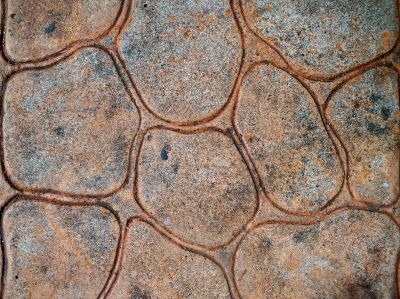Top-Rated Products For Stamped Concrete Service Projects
Browse through the most trusted products that ensure professional-grade finishes and long-lasting durability.
 In Louisville, KY, homeowners and contractors often turn to a variety of products to enhance and protect stamped concrete surfaces. These products are essential for achieving durable, visually appealing results that mimic natural materials such as stone, brick, or slate. From surface preparation to finishing touches, the right selection of products can significantly influence the longevity and aesthetic of stamped concrete installations.
In Louisville, KY, homeowners and contractors often turn to a variety of products to enhance and protect stamped concrete surfaces. These products are essential for achieving durable, visually appealing results that mimic natural materials such as stone, brick, or slate. From surface preparation to finishing touches, the right selection of products can significantly influence the longevity and aesthetic of stamped concrete installations.
Top Overall Option
High-Performance Sealer
A versatile, high-quality sealer suited for various stamped concrete surfaces, offering excellent protection and enhancement of color and texture. It provides a durable barrier against stains and moisture, helping to preserve the appearance of stamped concrete over time.
Types of Products For Stamped Concrete Service
Stamped Concrete Sealers
Sealers come in various finishes and formulations to protect and enhance stamped concrete surfaces.
Color Hardeners
Powdered coloring agents mixed into the concrete to achieve vibrant, long-lasting hues.
Release Agents
Materials applied during stamping to prevent molds from sticking and to create clean impressions.
Liquid Dyes
Surface-applied colorants that add depth and variation to stamped concrete patterns.
Staining Products
Acid or water-based stains used to add subtle color variations and a natural look.
Crack Fillers
Patching compounds designed to repair minor cracks and surface imperfections.
Surface Cleaners
Products formulated to thoroughly clean stamped concrete before sealing or coloring.
Etching Solutions
Chemicals used to prepare the surface for better adhesion of coloring or sealing products.
Polymer Modifiers
Additives that improve the flexibility and adhesion of overlays or sealers.
Overlay Materials
Thin layers of concrete or polymer overlays used to restore or modify existing stamped surfaces.
Anti-slip Additives
Materials mixed into sealers to improve traction on stamped concrete surfaces.
Surface Brighteners
Products used to enhance the natural appearance and vibrancy of the finished surface.
Popular Choices
A popular choice for enhancing the natural look of stamped concrete while providing protection.
Products that deepen and enrich the existing color tones of stamped surfaces.
Adds variegated color effects and a natural appearance to decorative concrete.
Offer durability and gloss, commonly used for high-traffic areas.
Provide an easy-to-apply coloring option with low odor and quick drying times.
Used to restore or modify existing stamped concrete with a fresh surface.
Essential for achieving detailed impressions and easy mold removal.
Convenient solutions for addressing minor surface damages.
Popular for creating variegated, natural color effects.
Known for quick drying and high-gloss finishes.
Commonly used for their effectiveness and ease of application.
Integral hardeners that provide vibrant and enduring color.
Offer high durability for industrial or commercial stamped concrete surfaces.
Help prevent staining and preserve color vibrancy.
Enhance slip resistance while protecting the surface.
Illuminate and refresh dull or aged stamped concrete.
A key component in stamped concrete projects is the use of high-quality sealers. Sealers not only enhance the color and texture of the stamped pattern but also provide a protective barrier against stains, moisture, and wear. Choosing the appropriate sealer depends on the specific use case, whether for driveways, patios, or walkways, and the desired finish—matte, satin, or glossy.
Coloring agents are also vital, offering a range of options from integral dyes to surface-applied stains. These products help achieve the vibrant, natural look that makes stamped concrete a popular choice for decorative surfaces. Additionally, release agents are used during the stamping process to prevent the molds from sticking and to ensure clean, detailed impressions.
Finally, surface repair products such as patching compounds and crack fillers are important for maintaining the integrity of stamped concrete over time. Proper application of these products can help address minor damages and prepare the surface for sealing and coloring, ensuring the finished project remains attractive and durable for years to come.
Key Buying Considerations
- Determine the specific application and location of the stamped concrete to select appropriate products.
- Consider the type of finish desired, such as matte, satin, or high-gloss, when choosing sealers.
- Evaluate the compatibility of coloring agents with existing concrete or overlays.
- Check the durability and weather resistance of sealers, especially for outdoor surfaces exposed to the elements.
- Select release agents that are compatible with your stamping molds and concrete mix.
- Assess the ease of application and drying times to fit your project schedule.
- Review product reviews and manufacturer guidelines for proper usage and safety measures.
- Consider whether additional surface preparation or cleaning products are needed before applying color or sealant.
- Think about slip resistance, especially for surfaces in high-traffic or wet areas.
- Budget for the entire project, including potential repairs and maintenance products.
- Look for products that offer long-lasting results to minimize future touch-ups.
- Determine if you need products suitable for restoration or overlay projects.
- Check for compatibility with existing finishes if performing repairs or modifications.
- Ensure products meet local regulations and standards for construction and safety.
- Consider environmental factors such as UV exposure, which may influence product choice.
